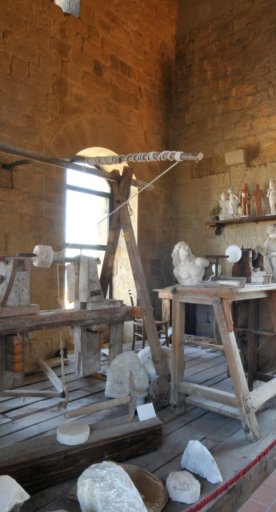Chapel of the Croce di Giorno in Volterra
Decorated in brilliant colors, the Chapel of the Croce di Giorno is one of Volterra's gems, once home to the Deposition by Rosso Fiorentino
The Chapel of the Croce di Giorno is a small place of worship of medieval origins. Its location on the edge of Volterra's historic town center testifies to its original connection with the mendicant order of the Franciscans: in fact, the chapel stands adjacent to the Church of St. Francis, to which it is connected by an internal door, although it has its own entrance on the square in front of it. Its construction is linked to the cult of the Company of the Cross.
The chapel is entirely frescoed, decorated with vivid and bright colors. The layout of the structure consists of two quadrangular bays divided by as many pillars on which St. John the Baptist and St. Francis stigmatized can be seen. The section of the back bay, where the altar is located, ends in a polygonal geometry, which interrupts the linearity of the room. The ceiling is punctuated by ribbed pointed vaults, which are also frescoed: in the vault of the first bay one can recognize the Evangelists.

Except these latter, the interior decorations are the work of Cenni di Francesco di ser Cenni, made starting in the early fifteenth century commissioned by the Guidi counts, whose descendants acquired ownership of the entire chapel in the eighteenth century.
The cycle of frescoes by Cenni di Francesco tells the Legend of the Holy Cross and stories drawn from the life of Christ: at the basis of the inspiration are the Legenda Aurea (an important medieval collection of hagiographic biographies in Latin) and the cycle of frescoes by Agnolo Gaddi that adorns part of the Basilica di Santa Croce in Florence.
The two cycles of paintings, the one by Gaddi and the other by Cenni di Francesco, would form the basis of the iconography made by Piero della Francesca in his work Stories of the True Cross, which can be admired in the Basilica di San Francesco in Arezzo.
The wall above the altar now displays a Crucifixion by Vincenzo Tamagni, but until the late 18th century it housed the Deposition of the cross by Rosso Fiorentino, a 16th-century work of great artistic significance, now on display at the Pinacoteca (Art Gallery) in Volterra.










